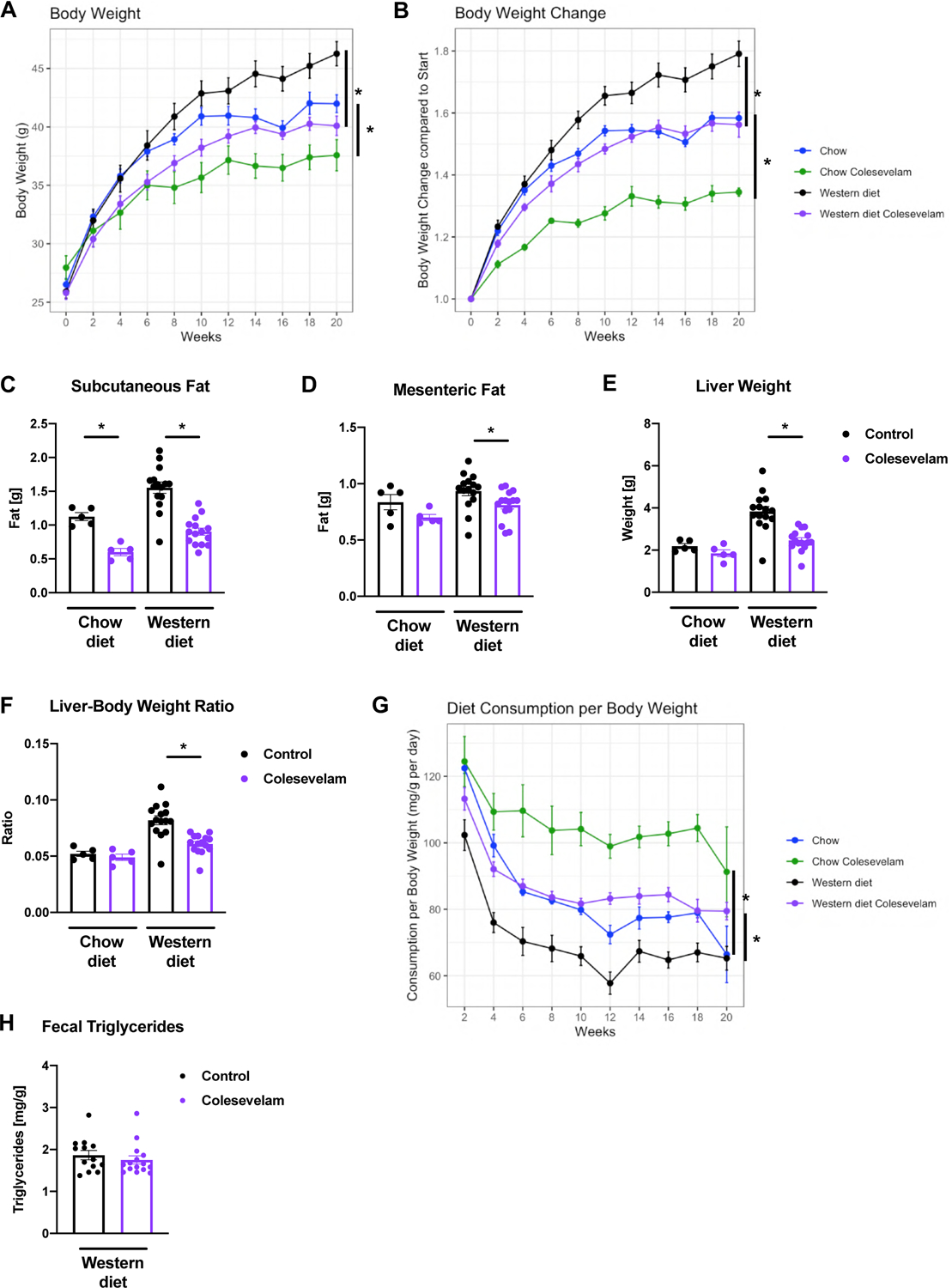Figure 1. Colesevelam decreases Western diet-induced body and liver weight gain despite increased food consumption in microbiome-humanized mice.

Germ-free C57BL/6 mice were colonized with feces from two patients with NASH and subjected to 20 weeks of Western diet-feeding with or without colesevelam (n=13–15 per group) or chow diet with or without colesevelam (n=5 per group). (A) Absolute body weight. (B) Body weight gain relative to start of feeding experiment. (C) Weight of subcutaneous white adipose tissue. (D) Weight of mesenteric white adipose tissue. (E) Liver weight. (F) Liver weight-to-body weight ratio. (G) Daily food consumption in mg per g body weight. (H) Fecal triglyceride content. Results expressed as mean ± s.e.m. P values are determined by One-way ANOVA with Holm’s post-hoc test (A-G) or Mann-Whitney test (H). *P<0.05. NASH, non-alcoholic steatohepatitis.
